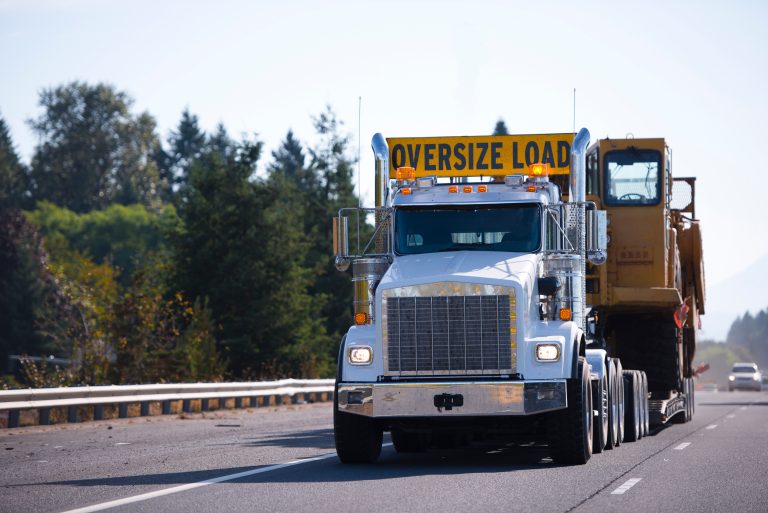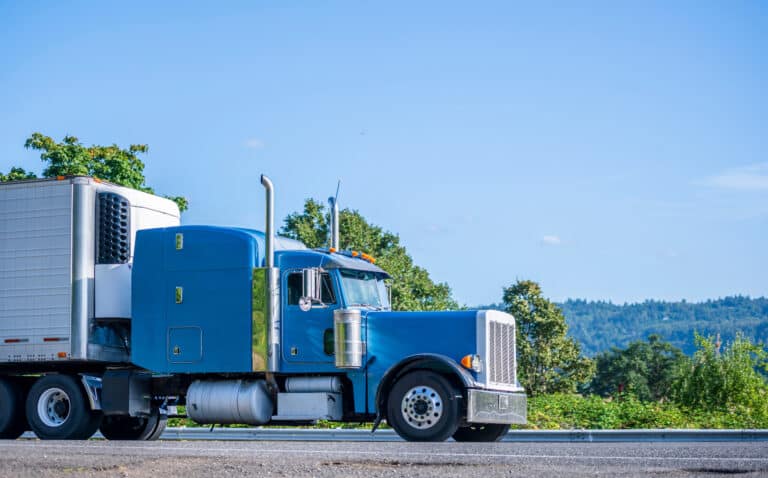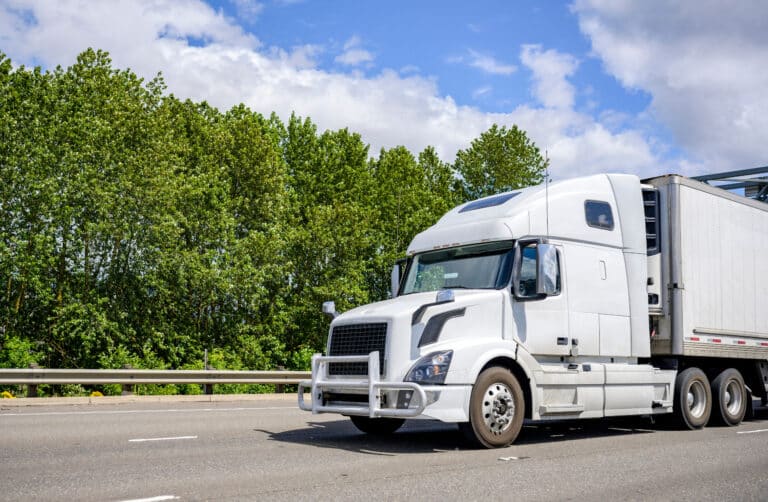If you are a commercial vehicle driver or a fleet manager operating in California, you need to comply with federal rules as well as those particular to the state. These rules are enforced by the Federal Motor Carrier Safety Administration (FMCSA) and the California Highway Patrol (CHP) to improve safety and compliance for commercial drivers and motor carriers.
In this article, we will explain the ELD and HOS rules in California, both for interstate and intrastate trucking, and how they differ from the federal rules. We will also provide some tips on how to choose the best electronic logs for your business.
Federal ELD Mandate
The federal ELD mandate requires most commercial drivers who are subject to the hours of service regulations to use an electronic logging device to record their record of duty status (RODS). The mandate also sets out technical specifications for ELDs, as well as requirements for data transfer, supporting documents, driver harassment, and device malfunctions.
Do you have any questions? Talk to ELD Advisor: 650-405-3372 or Request Callback
The mandate was rolled out in two main phases. By December 18, 2017, all drivers operating commercial motor vehicles subject to this legislation were required to record their hours of service electronically with a device that complies with the specifications in Subpart B of 49 CFR § 3951. By December 16, 2019, all drivers who were using grandfathered automatic onboard recording devices (AOBRDs) had to switch to compliant elogs.
Most drivers required to keep RODS under the federal hours of service rules must comply with the mandate. However, there are some exemptions for certain drivers and operations, such as:
- Drivers who use paper logs no more than 8 days in any 30-day period.
- Drivers who conduct drive-away-tow-away operations, where the vehicle being driven is the commodity being delivered.
- Drivers of vehicles manufactured before model year 2000.

California Log Book Rules
California adopted the federal ELD mandate for interstate commercial drivers in August 2018, with enforcement starting on October 1, 2018. California also adopted the intrastate ELD mandate and set the official effective date on December 31, 2020. This means that if you operate within the state’s borders, you must also comply with California DOT log book requirements, unless you qualify for an exemption. However, you can still follow the California HOS rules, which are slightly different from the federal rules—more on this in the last section of this article.
Log Book Violation Fines In California
If you fail to comply with the ELD mandate, you may face fines and penalties from the CHP or the FMCSA. Some of the fines for not being ELD compliant are:
- $12,135 for knowingly falsifying electronic log records ($1,214 per day).
- Reporting and recording fines range from $1,045 to $7,8641.
- Commercial regulation violations, with the ELD mandate, result in a per person fine of $10,4501.
You may also be placed out of service until you correct the violation. This could affect your safety rating and your business reputation. To avoid these fines and penalties, you should use a reliable and user-friendly elog that helps you manage your compliance with California HOS rules. You can also benefit from other features that an electronic logbook can offer, such as GPS tracking, fuel efficiency monitoring, driver coaching, and more.
How To Choose A Compliant And Efficient ELD
Choosing the right ELD solution for your business is not only important for compliance, but also for improving your efficiency and profitability. A reliable electronic logbook can offer you more than just hours of service tracking. It can also provide you with valuable insights into fleet performance, driver behavior, fuel consumption, vehicle health, and more. When choosing an elog system, you should consider the following factors:
- Ease of use. The device should be easy to install, operate, and maintain. It should come with a user-friendly interface that allows drivers to easily log in, change duty status, manage and certify logs, and transfer data. It should also have a reliable customer support team that can help you with any issues or questions.
- Compatibility. The system should be compatible with your vehicles, devices, and software. It should work with different makes and models of vehicles, as well as different types of mobile devices (smartphones, tablets, etc.).
- Functionality. The ELD should offer more than just basic hours of service tracking. It should also provide you with advanced features that can help you optimize your fleet operation, such as GPS tracking, driver coaching, vehicle diagnostics, etc.
- Cost. The solution should fit your budget and offer you a good return on investment. You should compare the upfront and ongoing costs of different ELDs, such as hardware purchase or lease, software subscription or license, installation fees, maintenance fees, etc. You should also consider the potential savings and benefits that an electronic logging system can bring to your business, such as reduced violations and fines, improved safety and compliance scores, lower fuel costs, increased productivity and efficiency, etc.
HOS247 is a top-rated electronic logbook that offers all of these features and more. HOS247 is a flexible and reliable ELD solution that is designed to meet the needs of fleets of any size.

HOS247: A Top-Rated ELD Solution
If you are looking for an ELD solution that can help you comply with the ELD and HOS rules in California, the rest of the United States, and Canada, HOS247 offers a dependable solution that is top-rated by truckers. Some of the benefits HOS247 offers to carriers include:
- Multilingual support. Feel at ease with our multilingual customer support team fluent in English, Spanish, Polish, and Russian, offering assistance in your preferred language every day of the week.
- Easy setup. Enjoy hassle-free implementation with our plug-and-play device, ensuring effortless installation for immediate use.
- Intuitive mobile app. Access your data anytime, anywhere, with our user-friendly app compatible with both Android and iOS devices, offering convenience at your fingertips.
- Real-time fleet management. Empower your team with our web-based portal, providing live monitoring and management capabilities, enabling you to make informed decisions on the go.
- Two-week trial. Test our solution with confidence using our 14-day trial period, ensuring it aligns perfectly with your needs before making any commitments.
- No-contract policy. Enjoy the freedom to choose with our no-contract policy, allowing you to adapt your subscription as your business evolves, without being bound by long-term commitments.
Federal and California HOS Rules

The hours of service rules are federal regulations that limit the driving time and on-duty time of commercial drivers, and require them to take minimum rest periods. The hours of service rules are intended to prevent driver fatigue, which is a major cause of crashes and injuries.
The hours of service rules vary depending on whether the driver is carrying property or passengers, and whether they operate in interstate or intrastate commerce. The following table summarizes the main differences between the federal and California hours of service rules for property-carrying drivers:
|
Federal HOS rules |
California HOS rules |
|
|
Drive time |
11 hours within a 14-hour window, after 10 consecutive hours off duty |
12 hours within a 16-hour window, after 8 consecutive hours off duty |
|
Break |
30 minutes after 8 hours of driving |
None required |
|
Workweek |
60/70 hours in 7/8 days, reset by 34 consecutive hours off duty |
Same as federal |
|
Short-haul exception |
Drivers who operate within a 150 air mile radius of their normal work reporting location, and return to that location within 14 hours, do not need to use an ELD or keep RODS. They also do not need to take a 30-minute break, but they must keep a time record. |
Drivers who operate within a 100 air mile radius of their home terminal, and return to that terminal within 12 hours, do not need to use an ELD or keep a daily log. They also do not need to comply with the off-duty time requirements, but they must keep a record of their duty status. |
|
Adverse driving conditions |
Drivers who encounter adverse driving conditions such as weather or traffic that were not known or reasonably known before starting the trip may extend their driving time by up to 2 hours, but they must still comply with the maximum on-duty time. |
Same as federal |
It is important for commercial vehicle drivers to know California commercial driver log book and HOS rules. By understanding and complying with these rules and choosing a reliable logbook, you can improve your safety and compliance record, avoid penalties and fines, and enhance your business’s performance.

As an expert in B2B and B2C sales, I’ve dedicated myself to perfecting sales processes and client retention strategies in the logistics and trucking industry. I have significantly contributed to the expansion of the ELD service, catering to retail and wholesale clients in need of HOS247 ELD solutions. My unwavering commitment to implementing state-of-the-art sales techniques and technologies ensures the continuous growth and success of businesses I work with.












The Federal Motor Carrier Safety Administration (FMCSA) implemented the Electronic Logging Device (ELD) mandate several years ago with the goal of improving road safety. The mandate requires most commercial drivers to use ELD solutions for capturing engine data and managing

Best Electronic Logbook App to Optimize Trucking Operations Drivers can simplify compliance, increase safety, and boost efficiency by choosing a reliable ELD. To find the best electronic logbook app, carriers should consider their trucking business’s specific needs and select a

ELDs HOS Logbook for American Truckers The federal mandate for the use of electronic logging devices (ELDs) helps keep drivers compliant with hours of service (HOS) limits. Driver fatigue has proven to cause accidents and losses—human, material, and economic. The